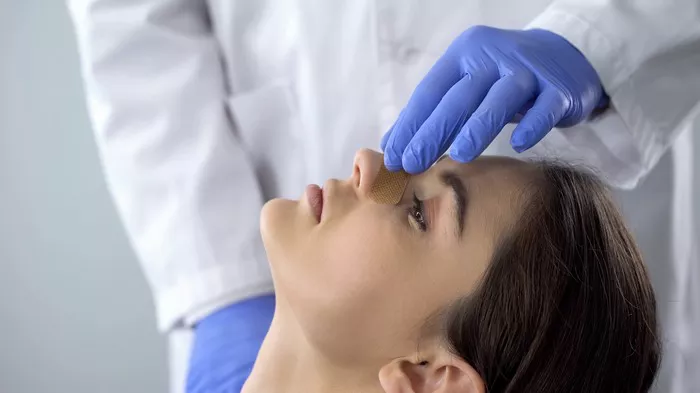Nose implants, also known as nasal implants or rhinoplasty implants, are synthetic materials used to augment or reshape the nose during rhinoplasty procedures. These implants can be made of various materials, such as silicone, Gore-Tex, or porous polyethylene, and are designed to enhance the appearance of the nose or provide structural support. While nose implants can be a viable option for achieving desired results, it is important to understand their safety profile and consider the potential risks and benefits associated with their use. In this article, we will explore the safety considerations surrounding nose implants to help you make an informed decision about your rhinoplasty procedure.
Understanding Nose Implants
Nose implants are commonly used in rhinoplasty procedures to address specific aesthetic concerns or provide structural support. They can be used to augment the nasal bridge, refine the nasal tip, or correct nasal asymmetry. The choice to use nose implants depends on the individual’s goals, existing nasal anatomy, and the surgeon’s expertise.
The Benefits of Nose Implants
- Enhanced Aesthetics: Nose implants can help achieve desired aesthetic results by providing added volume, contouring, or reshaping to the nose. They allow for precise adjustments tailored to the individual’s desired outcome.
- Structural Support: In some cases, nose implants may be used to provide structural support to the nose. This is particularly useful for individuals with weakened or collapsed nasal structures, such as a weak nasal bridge or a deviated septum.
- Long-Lasting Results: Compared to other techniques, nose implants have the potential to provide longer-lasting results. They can maintain their shape and stability over time, reducing the need for revision surgeries in some cases.
The Safety Considerations
While nose implants can offer desirable results, it is important to be aware of the potential risks and safety considerations associated with their use:
- Infection: Like any surgical procedure, there is a risk of infection with nose implants. The risk is generally low but can occur if proper sterile techniques are not followed during the surgery or if post-operative care instructions are not followed diligently.
- Extrusion or Displacement: In some cases, nose implants may shift, become displaced, or extrude through the skin. This can result in an unnatural appearance or discomfort. The risk of extrusion or displacement is generally higher with certain types of implants, such as silicone implants.
- Visibility or Palpability: Depending on the implant material and the thickness of the overlying skin, nose implants may be visible or palpable. This can create an unnatural or unappealing appearance, particularly in individuals with thin skin.
- Tissue Reaction: Nose implants are foreign materials placed within the body, and as such, they can elicit a tissue reaction. This may include inflammation, scarring, or the formation of a capsule around the implant. These tissue reactions can affect the appearance and long-term outcome of the surgery.
- Long-Term Stability: While nose implants are designed to provide long-term stability, there is a potential risk of changes or shifts in the implant position over time. This can lead to the need for revision surgeries to correct any undesired changes.
Choosing the Right Surgeon
One of the most critical factors in ensuring the safety of nose implants is choosing a qualified and experienced plastic surgeon. A skilled surgeon will carefully assess your unique situation, discuss your goals, and recommend the most suitable approach for your specific needs. They will consider your nasal anatomy, skin type, and potential risk factors to minimize complications and maximize the chances of a successful outcome.
Alternatives to Nose Implants
For individuals who have concerns about the safety or potential risks associated with nose implants, there are alternative approaches to consider. These may include:
- Autologous Tissue: Using your body’s own tissue, such as cartilage harvested from the nasal septum or the ear, can provide a natural and safe option for augmenting or reshaping the nose. Autologous tissue reduces the risk of complications associated with foreign materials and can provide long-lasting results.
- Dermal Fillers: In some cases, dermal fillers can be used as a non-surgical alternative to nose implants. Dermal fillers can provide temporary augmentation or reshaping of the nose, but the results are not permanent and may require repeat treatments.
- Cartilage Grafts: Cartilage grafts, either from your own body or from a donor source, can be used to enhance the nasal structure or correct deformities. Cartilage grafts are a safe and effective option for achieving natural-looking results.
Conclusion
Nose implants can be a viable option for individuals seeking nasal augmentation or reshaping. While they offer benefits such as enhanced aesthetics and structural support, it is important to consider the potential risks and safety considerations associated with their use. Choosing a qualified and experienced plastic surgeon is crucial to ensure a safe and successful outcome. Additionally, exploring alternative options such as autologous tissue or cartilage grafts may provide a natural and potentially safer alternative. By thoroughly understanding the risks and benefits of nose implants and discussing your concerns with a reputable surgeon, you can make an informed decision that aligns with your goals and prioritizes your safety.


